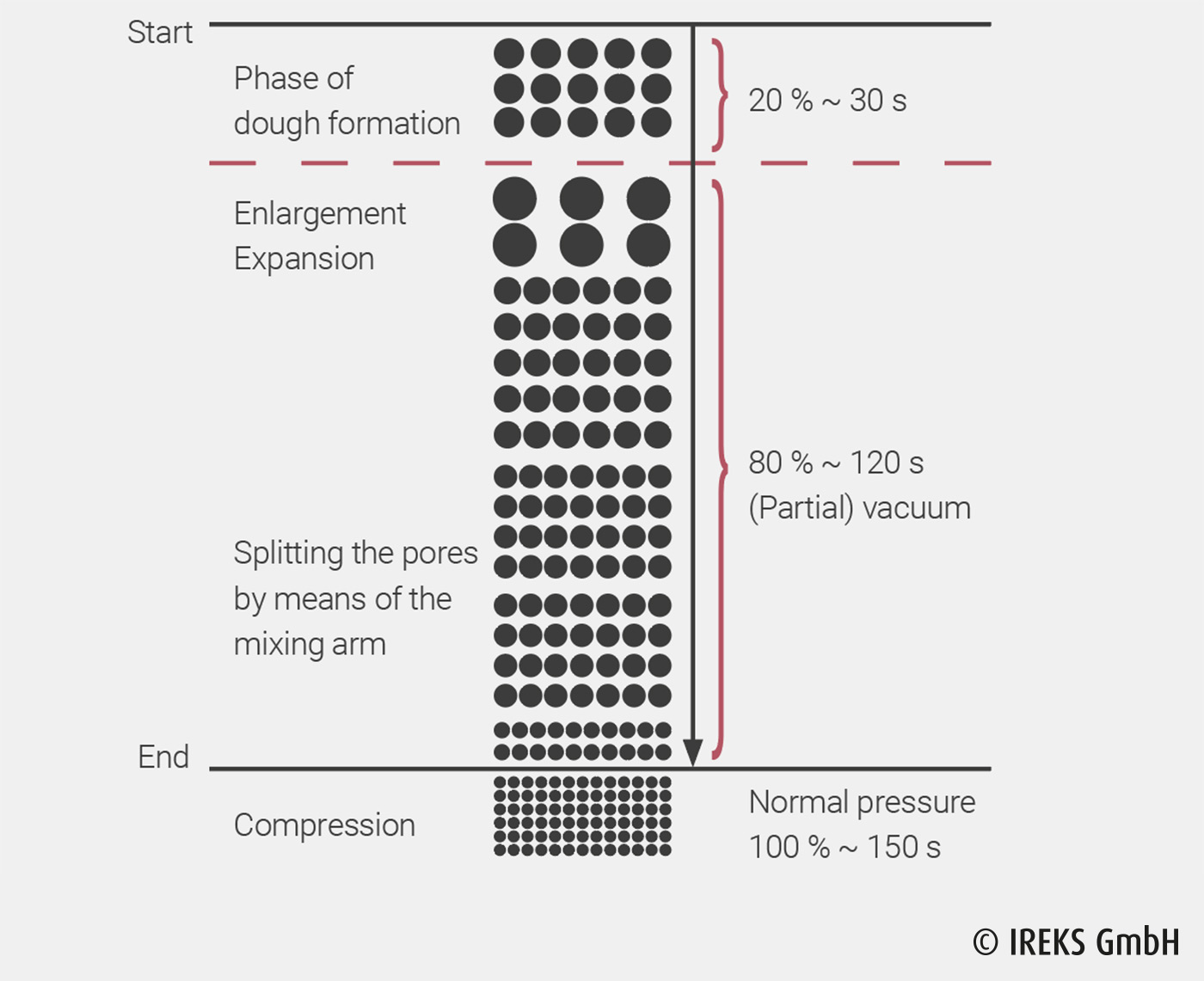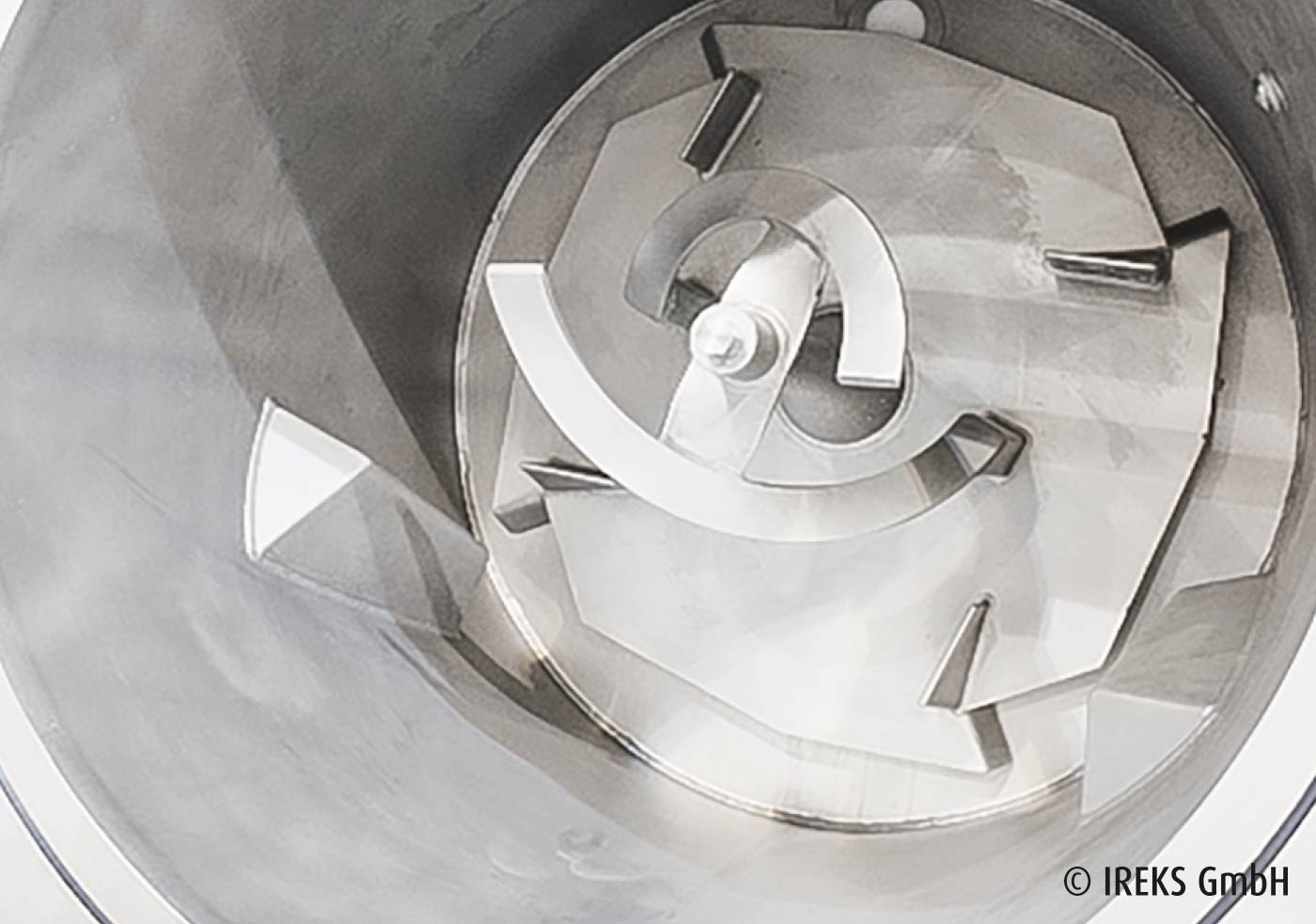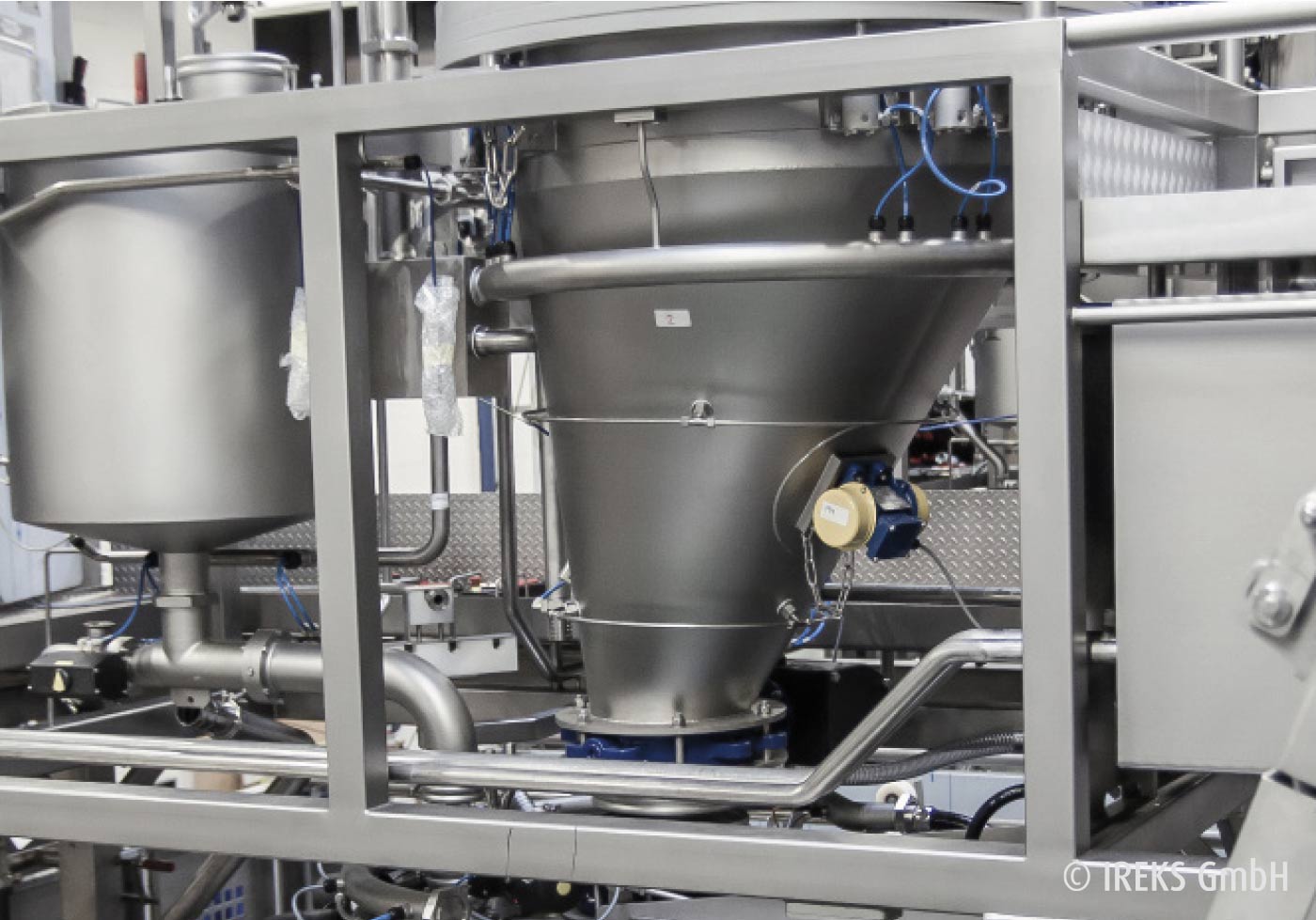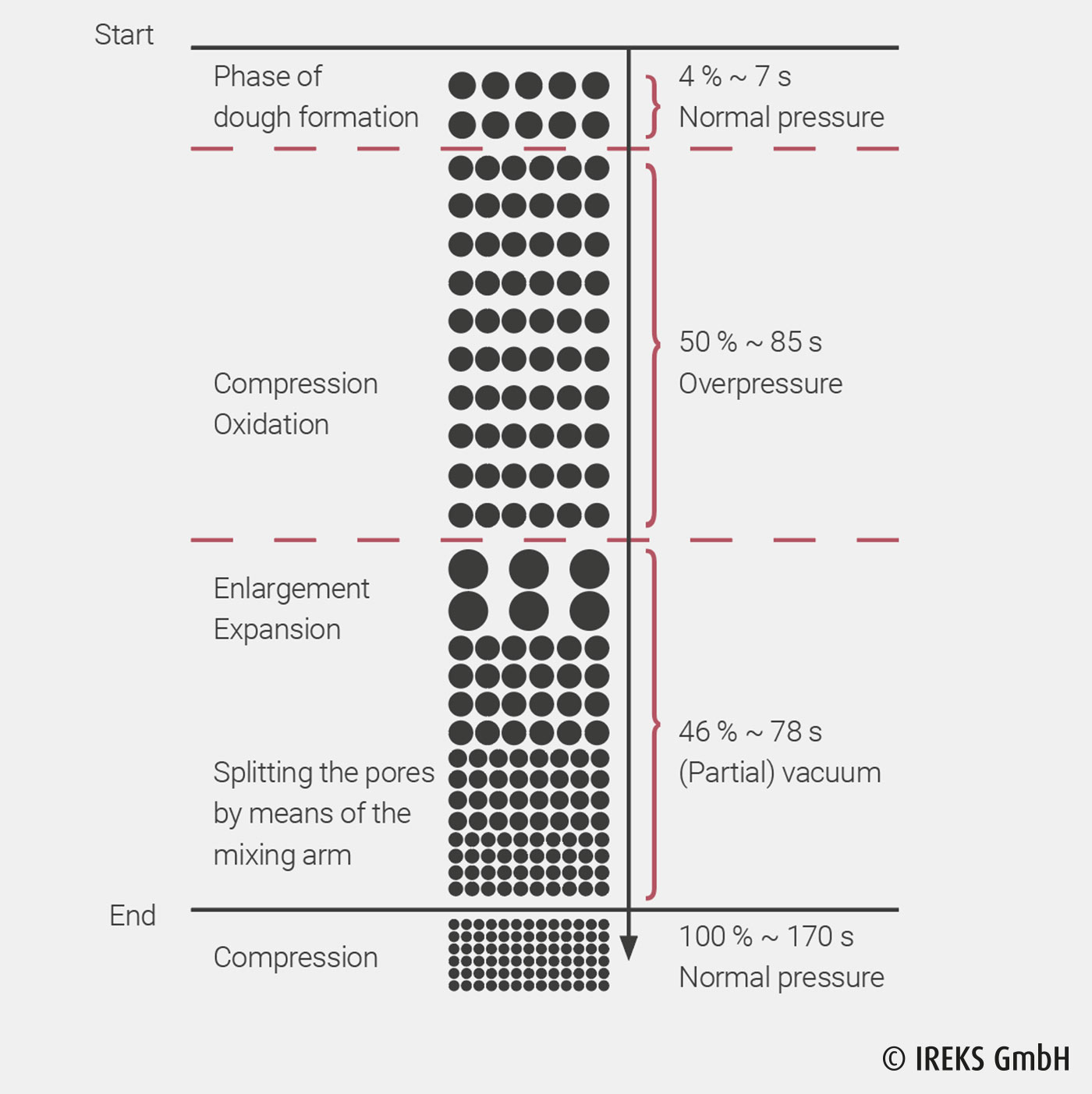Doughs for soft baked goods are mixed intensely. The gluten network should be well developed to obtain a regular crumb texture. In addition, doughs with fat and sugar require a somewhat more intense mixing, as the construction of the gluten network is delayed by the fat and sugar quantities. In the sector of plant bakeries, spiral mixers, twisting mixers or horizontal mixers are used in the batch system. Especially there, where very high qualities of wheat flour are available (USA, South-East Asia, Australia), horizontal mixers with intensive mixing are mainly used.
Something to mention is the Chorleywood Bread Process. This procedure, developed in Chorleywood in England, serves to achieve a particularly fine and cotton wool-like crumb texture, a light-coloured crumb and a high specific volume of baked goods. For this, intense mixing is done in special vertical mixers with various pressure curves (partial vacuum to overpressure). The length of mixing is based on the amount of energy introduced and is approx. 150 to 180 seconds. In the production of toast bread and sandwich bread, the dough is slightly over-mixed, so that it is plastic and capable of flowing and therefore fills out the corners of the tins better. The doughs are processed further without bulk fermentation time.
A difference is made between vacuum mixing and pressure-vacuum mixing. In the case of vacuum mixing, the pressure in the mixing chamber is lowered to approx. 0.5 bar after the first mixing phase (approx. 25 to 45 seconds), while mixing is continued. Subsequently, further mixing takes place with normal pressure. Here, the gas bubbles, which have initially been increased in size due to the vacuum, are split into small, fine gas bubbles and spread evenly throughout the dough.
In the case of pressure-vacuum mixing, mixing takes place using a slight overpressure (approx. 1.4 bar) after the dough formation phase. Subsequently, the pressure in the mixing chamber is lowered to approx. 0.5 bar, leading to an enlargement of the gas bubbles and the split into small gas bubbles which follows. These are compressed towards the end of mixing. The effects in regard to the fine crumb texture are increased by the pressure-vacuum mixing.




